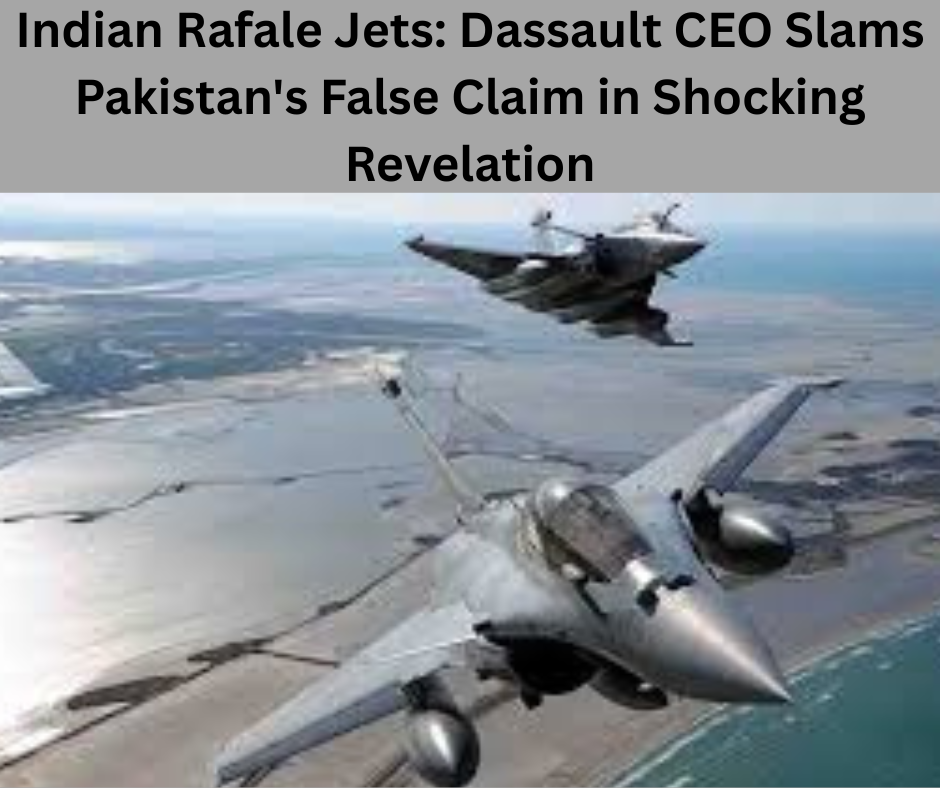Indian Rafale Jets: Dassault CEO Dismisses Pakistan’s Claim in Explosive Statement
Pakistan’s False Claims About Indian Rafale Jets
In the aftermath of India’s retaliatory Operation Sindoor, Pakistan made startling claims of having shot down five Indian aircraft, including three Indian Rafale jets. This statement quickly garnered attention across global media and defence circles. However, Dassault Aviation CEO Eric Trappier has firmly refuted these claims, calling them “factually incorrect” and without any supporting evidence.
Dassault Aviation Breaks Silence
Eric Trappier, CEO of Dassault Aviation—the French manufacturer of the Indian Rafale jets—broke his silence regarding the controversy. In an interview with a French publication, Trappier stated that there has been no official communication from the Indian government confirming any such losses. He emphasized that Pakistan’s claim lacks credibility and is not backed by any physical evidence.
“What Pakistan is claiming about downing three Rafales is simply not true,” Trappier said. He further added, “In time, when the full details emerge, the truth will surprise many.”
Indian Rafale Jets and Operation Sindoor
The backdrop to this controversy is India’s strong military response to the terror attack in Pahalgam. India launched Operation Sindoor, a high-intensity mission aimed at neutralizing terror camps in Pakistan and Pakistan-occupied Kashmir. Indian Rafale jets played a key role in these operations, showcasing their versatility and combat readiness.
Pakistan’s Defence Minister Khawaja Muhammad Asif alleged that the country’s air defence had successfully shot down three Indian Rafale jets, along with one Su-30 and one MiG-29. However, no visuals, wreckage, or radar confirmations have been presented to support this claim.
Rafale Jets: A Versatile Combat Platform
Eric Trappier took the opportunity to reiterate the exceptional capabilities of Indian Rafale jets. He described the aircraft as one of the most advanced 4.5-generation fighters, equipped for air-to-air combat, ground strikes, nuclear missions, reconnaissance, and even carrier operations. He noted that Rafale jets are superior to Chinese alternatives and even better suited than the F-35 for many combat scenarios.
“In my view, Rafale is the best combat aircraft in the world because of its multi-role capabilities,” Trappier asserted. “It may not be superior to the F-22 in stealth, but it surpasses others in real-world operational flexibility.”
Clarifying Misconceptions About Combat Losses
Addressing the confusion around combat success, Trappier highlighted an important perspective. “Success in aerial combat is not defined solely by zero losses, but by accomplishing the mission objectives,” he said. Drawing parallels with historical battles, he pointed out that even victorious forces suffered losses, yet they achieved their strategic goals.
He cautioned against premature conclusions, stating, “Whether there were losses or not and whether the mission goals were met will become clear in time.”
Indian Rafale Jets Under Global Spotlight
The episode has once again placed Indian Rafale jets under the global spotlight. India’s strategic acquisition of Rafales from Dassault was aimed at strengthening its air superiority against regional threats. Their deployment during Operation Sindoor signals their operational readiness and strategic importance.
India has not released any official comment on the number or type of aircraft involved in the operation or whether any were lost. This strategic silence, some analysts argue, is a calculated move to avoid escalating tensions.
Conclusion
While Pakistan continues to assert that it brought down Indian Rafale jets, Dassault Aviation and various defence experts have dismissed the claims as baseless. With no supporting evidence and strong counter-statements from credible sources, the narrative increasingly points toward propaganda.
As Eric Trappier aptly put it, “Some may be surprised by the truth when it finally comes out.” Meanwhile, Indian Rafale jets continue to symbolize India’s growing air power and resilience in an increasingly volatile region.
Read more: Pune Bridge Collapse
